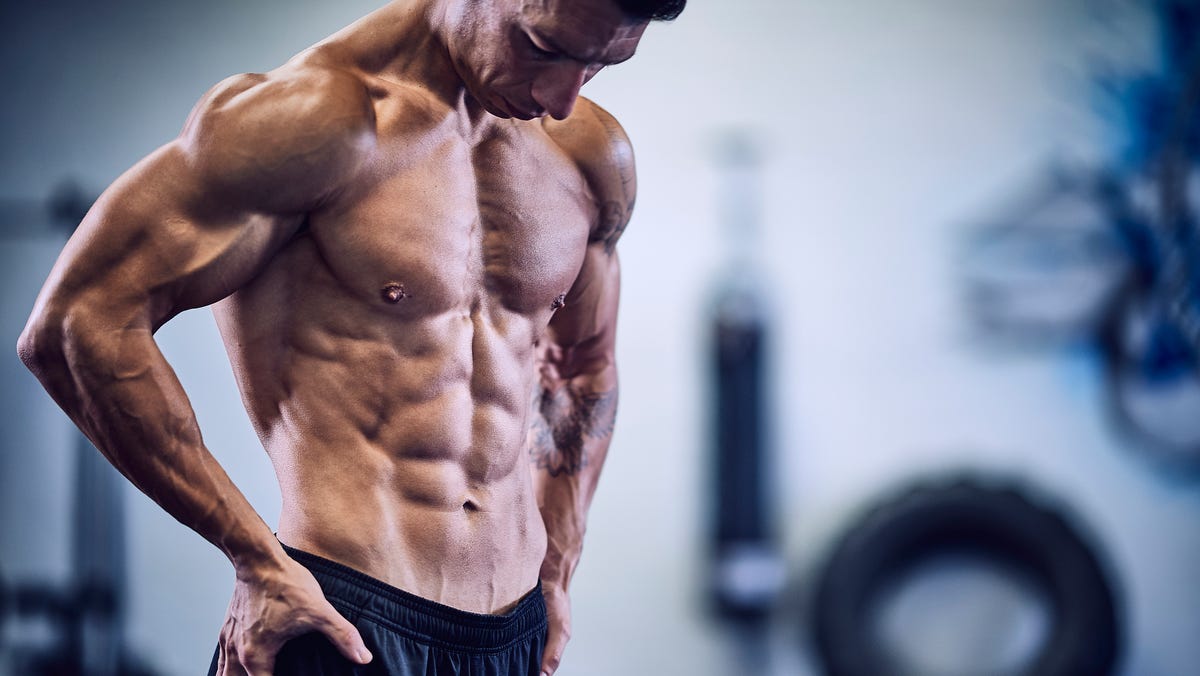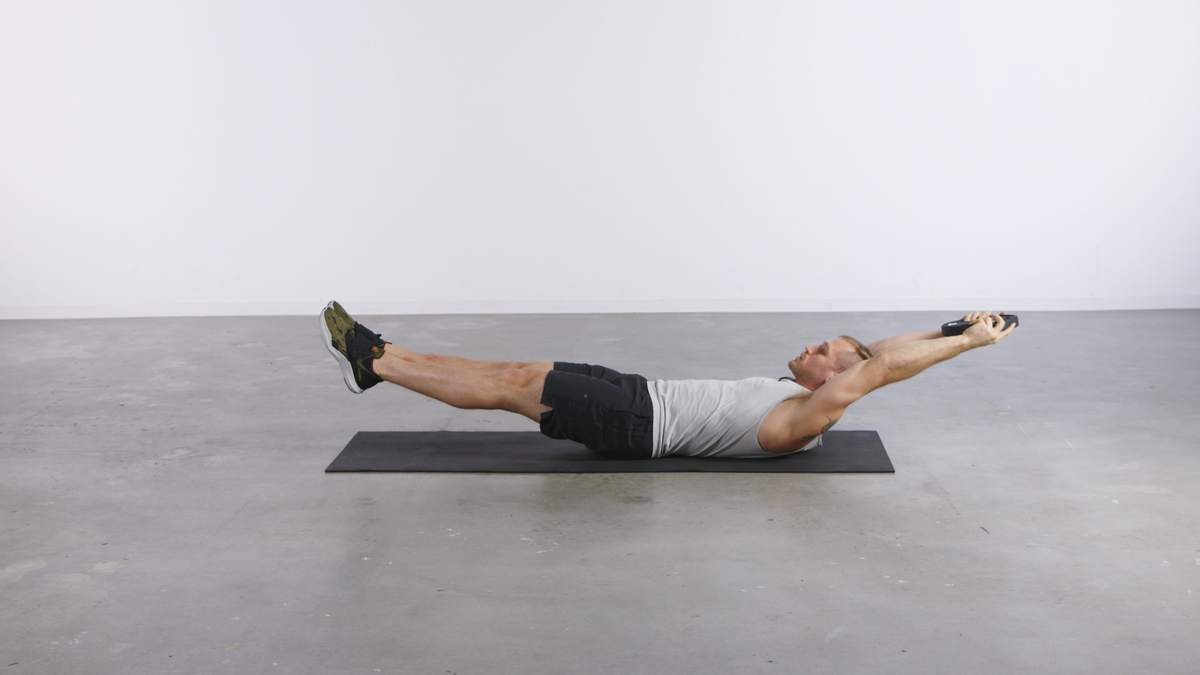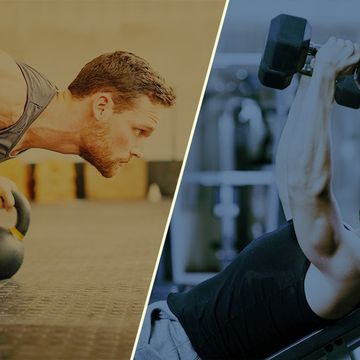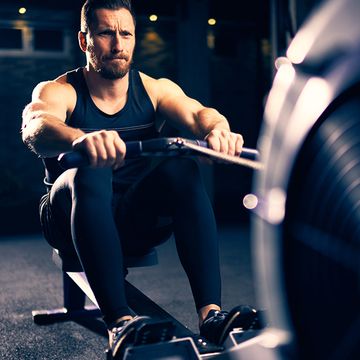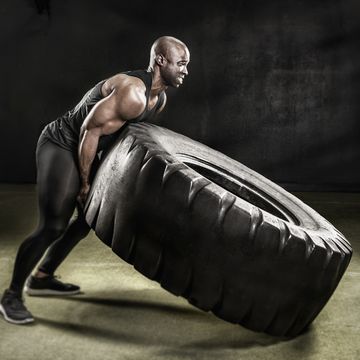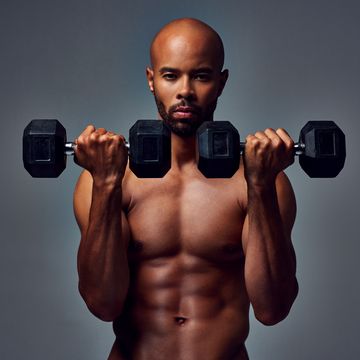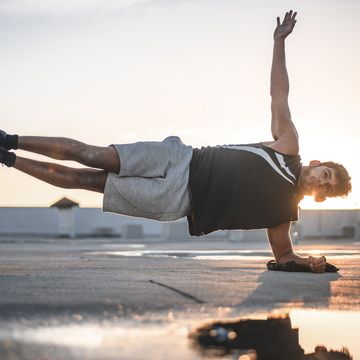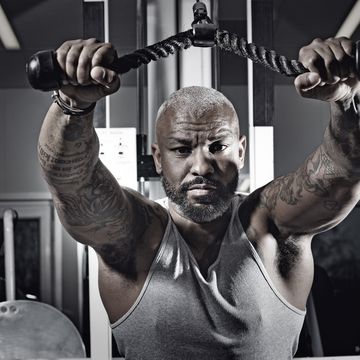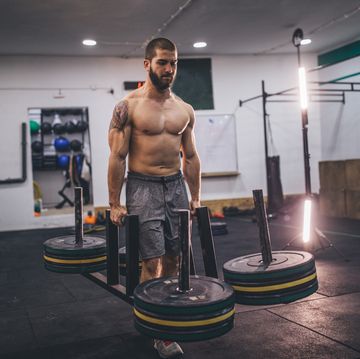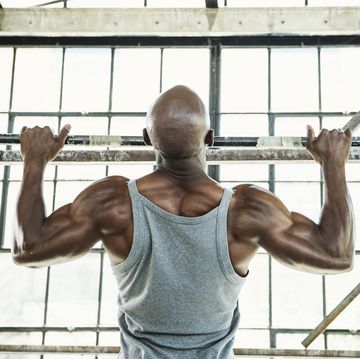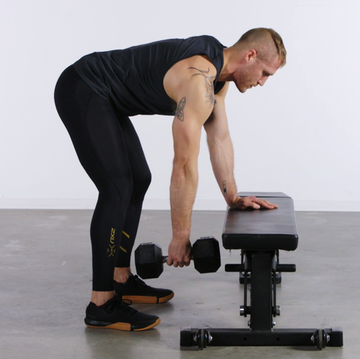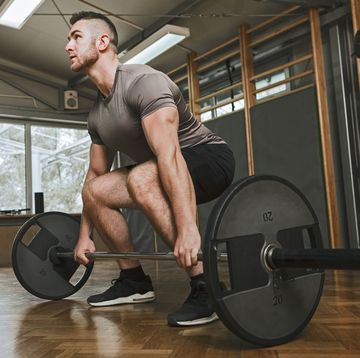This is Your Quick Training Tip, a chance to learn how to work smarter in just a few moments so you can get right to your workout.
Nothing says “fit” like a chiseled six-pack, but if you want to maximize athletic performance in addition to looking good shirtless, you have to look deeper—literally—to a muscle called the transversus abdominis.
Located directly behind your rectus abdominis (i.e., “abs”), the transversus abdominis wraps horizontally around your lower abdomen like a girdle or weight belt, hugging your internal organs and stabilizing your spine. You contract it automatically whenever you move your arms or legs, and if you lift regularly, you likely also engage it purposefully and forcefully by “bracing” your core in exercises like the squat and deadlift (and if you don’t, you should).
Therein lies the key benefit of targeting this hidden and oft-neglected core muscle: The stronger your transversus abdominis is, the more stable you’ll be, and the more strength and power you can put into every movement you make. You’ll be able to safely squat more weight, deadlift greater loads, curl heavier dumbbells, and potentially even squeeze out a few more reps on the pullup bar.
That, in turn, can help optimize muscle growth, strength building, and fat loss. As an added bonus, research suggests that strengthening your transversus abdominis can also help alleviate chronic low back pain.
How to Train Your Transversus Abdominis
Add planks and hollow holds to your weekly workout plan. The primary action in both exercises involves drawing your belly button toward your spine, directly engaging your transversus abdominis. It’s called “abdominal bracing,” and to do it effectively, just imagine you’re about to be punched in the gut.
Planks are the classic way to target the transversus abdominis, but a study by Australian researchers found that “the inward movement of the abdominal wall in supine” (a.k.a. performing a hollow hold) produces potentially even greater muscle activation. Incorporating both exercises into your workout program will make sure that you hit your transversus abdominis from multiple angles, and in so doing, optimize its strength.
Let's break down both movements.
The Plank
●Get down on the ground. Stack your elbows directly beneath your shoulders and extend your legs. Rest your weight on your elbows and your toes.
●Squeeze your glutes and core to create full-body tension. Think about pulling your belly button into your spine.
●Contract your low back, lats, and rhomboids. Your back should form a straight line; don't let your pelvis dip down or your butt to rise up.
●Face your gaze face down, which keeps your neck in a neutral position.
●Hold the plank for 45 seconds to 1 minute at a time, maintaining full-body tension.
The Hollow Hold
●Start lying down on the ground.
●Drive your lower back into the ground, flexing your abs hard.
●Raise your feet an inch or so above the ground, keeping your legs straight and your lower back on the floor.
●Extend your arms out over your head.
●Hold the position for 45 seconds to 1 minute, maintaining full body tension.

Trevor Thieme is a Los Angeles-based writer and strength coach, and a former fitness editor at Men’s Health. When not helping others get in shape, he splits his time between surfing, skiing, hiking, mountain biking, and trying to keep up with his seven year-old daughter.
